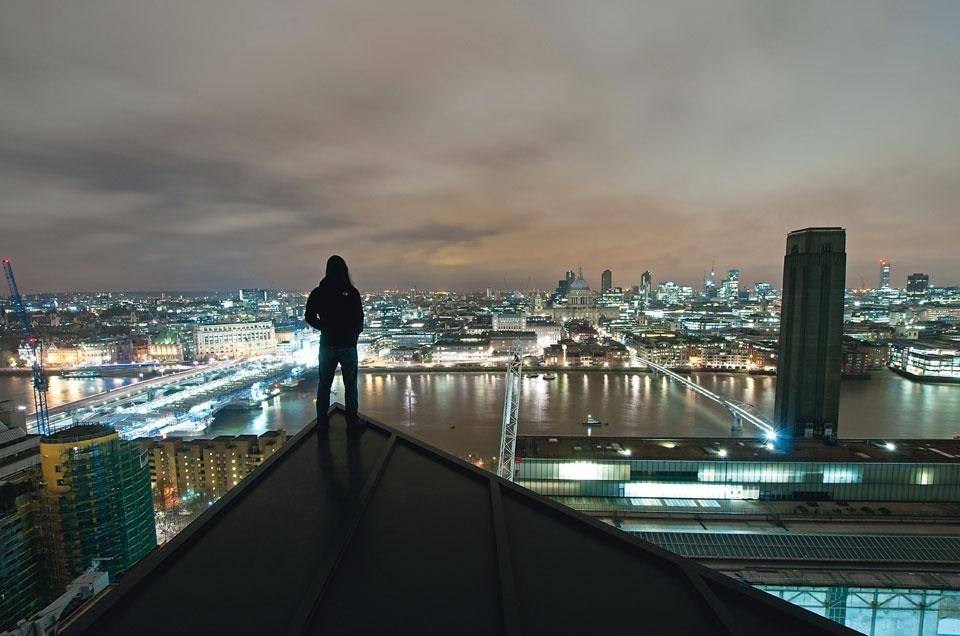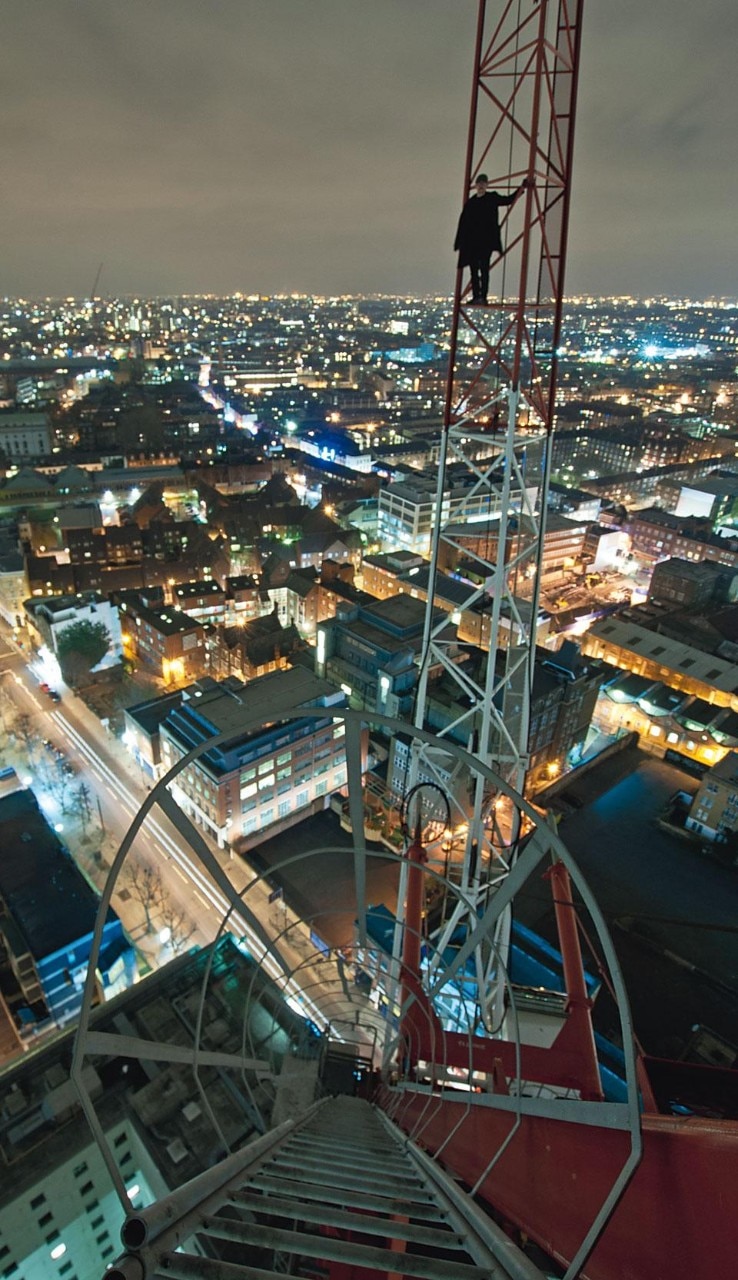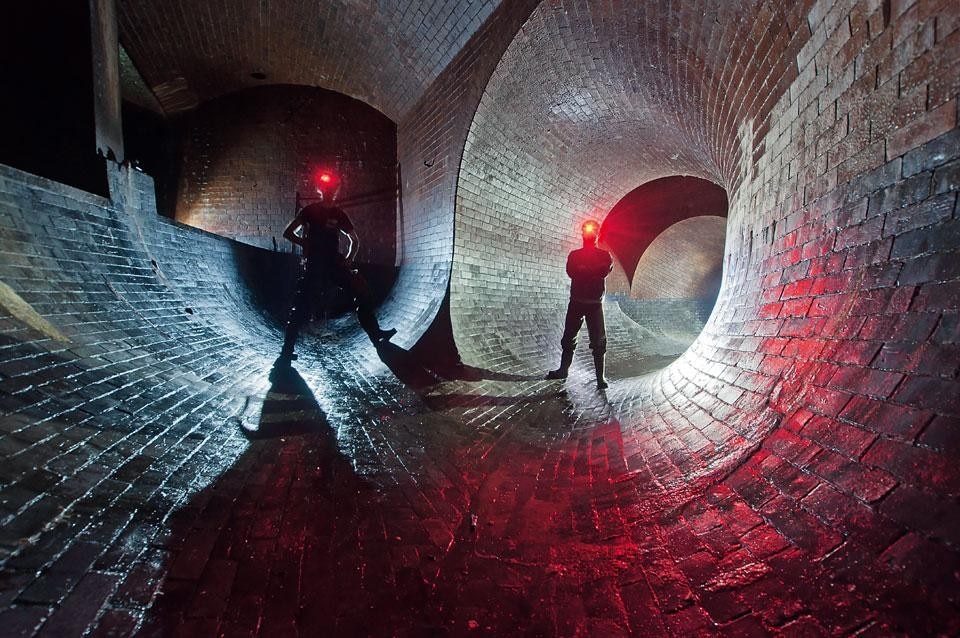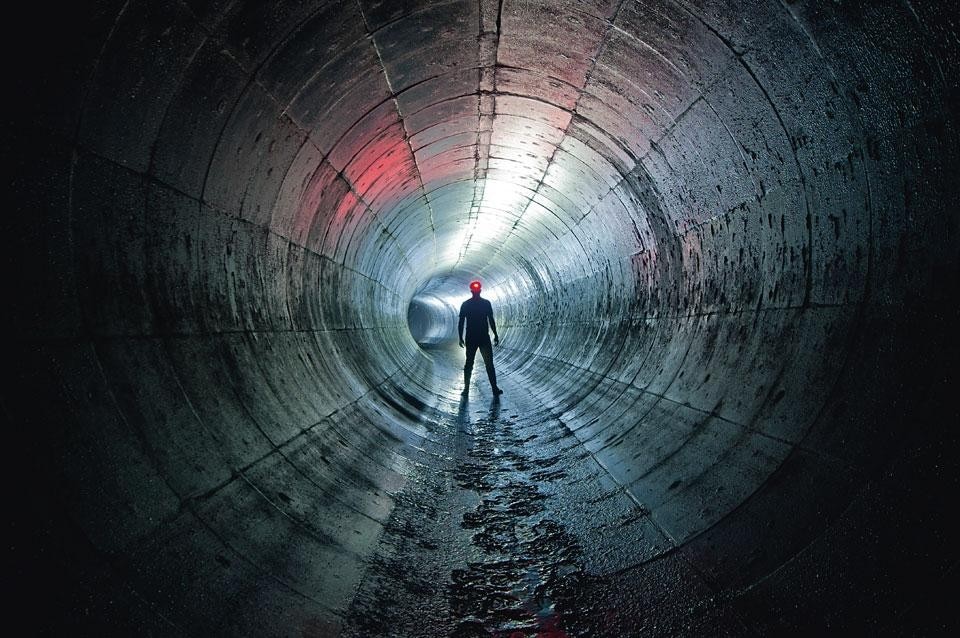London is a city undergoing constant mutation. Historical archives are filled with photographs dating from as recent as the 1960s portraying areas of the city that are almost unrecognisable today.
The sprawl continues to stretch from different urban nodes, East, West, South and North, melding into one another, subsuming suburbs, urbanising not only the landscape but also the citizenry.
However, the city has grown up and down as much as out. Especially in the past few decades, with the construction of One Canada Square, the Barbican towers, the Balfron and Trellick towers, 122 Leadenhall Street, Swiss Re Tower, Heron Tower, Centre Point, Strata, 20 Fenchurch Street and, of course, the Shard. These vertical megaliths are impossible to escape, they inevitably become part of the public consciousness and are playfully renamed: Thatcher's Dick, the Gherkin, the Lipstick (or Blow Dryer), the Tower of Terror, the Cheese Grater, the Walkie Talkie. In time, few people remember what the "official" name for these places was; they are consumed and regurgitated by playful imaginations. This is one of the ways we make corporate, private and largely inaccessible spaces ours. At the same time, under our feet, ostensibly more public construction projects are taking place as new urban networks like Crossrail are sunk deeper and deeper beneath existing sewers, gas and fibreoptic conduits, telephone lines and transportation corridors. Every once in a while, a cross-section diagram of subterranean London is proffered and people marvel at the complexity, wishing they could see it for themselves. We do.

It was surprising to us that after all our accomplishments as explorers — revealing the control rooms of Battersea Power Station, abandoned Tube stations, the London Mail Rail and extensive deep shelters around the city — this would be the exploration the sparked the most interest. However, extremes always encourage sensationalist media titillation: the tallest, the deepest, the longest whatever. The press called the Shard the "urban Everest" and made every attempt to link the story to the 2012 Olympics through "security" and "urban sporting" angles. The response from Shard's security services was a relatively bored acknowledgment that security "had been tightened". The developers, not to mention the architect Renzo Piano, probably enjoyed the free publicity and got a chuckle out of the story. The reaction that mattered most to me, however, was not from the media or the developer, but from other Londoners.

The media attention over the Shard story was hard on us as a group. Many explorers are content for our practice to remain on the margins, a selfish, egotistical naval-gazing adrenaline squeeze. I am not. The experiences we have in the city, and the discoveries we make, deserve to be shared precisely because of comments like these. People are overworked, overtired, bored and apathetic. They are frustrated with the government, corporations, banks and their jobs. Our explorations pull them out of that banal capitalist horizontality (even for a few moments) and elevate them into a vertical urban realm where the impossible is made possible, both above and below ground. We stroll though buried rivers, float in the clouds, run tracks between trains and find places lost to time.
By sneaking in and taking photos to share with fellow urbanites, we begin publicising private space, democratising oligarchic architecture, turning abstract corporate spaces into more human, playful places, and making public infrastructure visible to the public who pay to maintain it with their tax money
The conceptual barrier to places in our cities is brought about by a process of engineered exclusion. While horizontal sprawl and change is visible, visitable and affects us (examples include sitting in increased traffic or putting up with construction due to transportation line extensions), we often feel out of touch with vertical sprawl because those spaces (especially tall buildings) are built for the elite, the 1%, the bankers, bosses and businessmen (yes I said men). In the case of the Shard, apartments on floors 53 to 65 will cost 3 to 5 million pounds each. While concessions are sometimes made, such as the inclusion of public viewing platforms on the Shard, they will presumably, like the Eye, be for those who are able to pay exorbitant entrance fees. Those platforms will also have a separate entrance to ensure visitors don't access the rest of the building. It's clear that these vertical spaces, though inescapably part of the urban constitution, are not built for us.

Urban exploration may seem like something new due to the increased media coverage recently — let me assure you it is not. The desire to explore the environment in which we live is hard-wired into us as curious, passionate, inquisitive beings — it always has been. Whether we are scaling snowy peaks, diving to new depths in the sea, excavating prehistoric house pits or wiggling through vent shafts into metro tunnels, the desire to explore is part of us. Wherever doors are closed, we will find a way through, wherever history is buried, we will uncover it, wherever architecture is exclusionary, we will liberate it. Bradley L. Garrett (@Goblinmerchant) is a researcher, explorer and photographer



